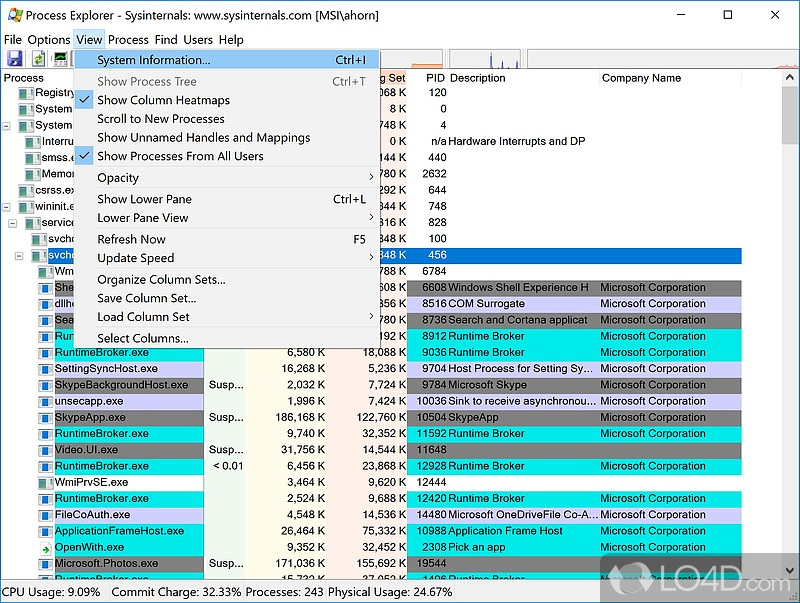
- #Process explorer disk usage install
- #Process explorer disk usage update
- #Process explorer disk usage portable
- #Process explorer disk usage free
The Task Manager alternative shows you the process currently running on the system. Security Task Manager is probably one of the best task managers you can have on your Windows computer. Apart from that, Daphne can be used to view the real-time CPU, RAM and Disk Usage in a graph. What’s more interesting is that Daphne allows you to schedule a process to be killed at a specific time. It also shows the CPU and memory usage along with the active processes. It has a lightweight user interface that shows all running processes. Daphneĭaphne is one of the most advanced and open-source task management tools available for Windows 10. One can also manage startup applications with Task Manager Deluxe. It lists all running processes and allows you to start and stop any of them. Task Manager Deluxe has a tabbed interface, allowing you to navigate the desired section easily.
#Process explorer disk usage portable
Since it’s a portable utility, you can run it on any PC without installation.
#Process explorer disk usage free
The good thing about Task Manager Deluxe is that it’s free and portable. Task Manager DeLuxe (TMX) is based on MiTeC System Information Component Suite and offers powerful features. Apart from that, you can even compare file and registry snapshots with each other. Users can also create Files, Registry snapshots that can be compared against another for troubleshooting. This tool lets users see the per-process CPU usage history. System Explorer has a handful of features that can increase your system security. Why can’t the designers fix these things? Oh well, job security for techs like us.This is not an ordinary process management tool. Even though they all claim to stop or slow down when the computer is in use, that never seems to happen. I wish mfgs would put a big HD activity light on the monitor frame.Īlso, the many culprits recently have been indexing and backup programs.
#Process explorer disk usage install
It is amazing to me that the #1 complaint users have is that there computer is running slow, and most of the time it is becuase of excessive hard drive activity, yet 1) manufacturers make the hard drive activity light tiny and hard to see and 2) Windows does not include a HD activity monitor (until you install Process Explorer. I use just that one and not the other three. 33, the word “Bytes” is added to the column name, as in “I/O Delta Read Bytes.” I mention this in case you are looking for “I/O Delta Read” and can’t find it :).Īlso, the most useful column for me is “I/O Delta Total Bytes.” That sums the three others (read, write, other) into a single column. Instant Fundas has more details.Īt least with Process Explorer v11.
#Process explorer disk usage update
Update – You can also use the Disk Activity tab in the built-in Resource Monitor. Click on the column header and the offending process will leap to the top. Next time your hard drive starts churning and you want to know what’s causing it, get Process Explorer, go to View -> Select Columns, Process Performance and enable the three columns column I mentioned above. I turned on other and it shot to the top of the list with a few hundred a second. It was scanning thousands of files so there was obviously disk usage, but the process had no reads or writes. I didn’t know about the I/O Delta Other until I was running a disk scan.

The trick is to enable the following three columns one column: I/O Delta Total Bytes I searched high and low for a tool to show processes ordered by current disk activity and eventually found what I was looking for in Process Explorer.

Nothing stands out with high CPU or memory use and the network traffic is all but nil. The only thing missing was an easy way to see what processes were using the disk.Įvery once in a while my hard drive begins churning and it’s a little disconcerting to have no idea what it’s doing. Process Explorer from SysInternals does a great job of showing processor and memory use (overall and for each process) and NetStat Live displays incoming and outgoing network traffic. I’ve had no trouble finding processor, memory and network monitoring tools on Windows.


 0 kommentar(er)
0 kommentar(er)
